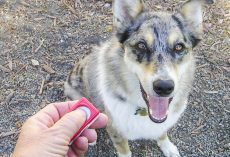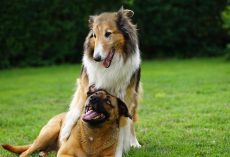Bringing home a new puppy is exciting — the cozy bed, the overflowing toy bin, the endless cuddles. But before the fun really begins, there’s one major milestone every new pet parent has to tackle: potty training.
If this is your first puppy, you may have heard the horror stories. Don’t worry — with a simple plan, some patience and a good enzymatic cleaner, you’ll have your pup trained before you know it.
Here’s everything you need to know to make potty training a smooth, stress-free process.
How Long Does Puppy Potty Training Take?
Every pup learns at her own pace, but most puppies can reliably potty outside within one to two months when trained consistently.
What You’ll Need Before You Start
Patience
This is your most important tool. Accidents are part of the process — stay calm, stay consistent and celebrate progress.
A Veterinary Check
Make sure your puppy gets a full exam within 48 hours of coming home.
Health issues like UTIs, parasites or cystitis can cause accidents or slow progress, so it’s crucial to rule those out before training begins.
High-Value Treats
Use extra-special rewards during potty training — something your puppy only gets for doing her business outside.
A Crate
Crates help prevent accidents overnight or when you can’t supervise directly, so consider crate training your puppy as well to make potty training a bit easier on you. A properly sized, comfortable crate can make potty training much easier.
Try this Revol Collapsible Dog Crate from Diggs
Puppy Pads (Used Sparingly)
Pads can help catch accidents in crates or small playpens, but shouldn’t replace frequent trips outside. Overusing puppy pads can accidentally teach your pup that it’s OK to go indoors.
If you choose to use them, limit them to confined areas and avoid relying on pad-to-door “weaning.” Instead, take your puppy outside frequently to form the habit.
Try these Amazon Basics Puppy Pads from Amazon
Enzymatic Cleaner
Accidents happen — and if the smell lingers, your puppy will keep returning to the same spot. Use an enzymatic cleaner to fully neutralize odors.
Try the Rocco & Roxie Stain & Odor Eliminator from Amazon
Create a Potty Training Schedule
A consistent schedule is one of the biggest keys to success.
Take your puppy out every 1–2 hours, and stay outside for at least 15 minutes to give her time to relax and go.
Ideal times for potty breaks include:
- First thing in the morning
- Right before bed
- 20–30 minutes after meals
- Right after naps
- After playtime or zoomies
Young puppies have tiny bladders, so frequent trips outside are essential.
Essential Potty Training Tips
1. Supervise your puppy closely
Free-roaming puppies can get into trouble fast.
Watch for signs she needs to go:
- Sniffing the floor
- Circling
- Wandering away
- Suddenly disappearing from view
If you’re busy but want your puppy with you, clip her leash to your belt so she can’t wander off.
2. Use a crate or confined area when you’re away
When introduced and used correctly, crate training is a great way to prevent bathroom accidents when you can’t supervise.
- Never use the crate as punishment
- Don’t leave your puppy inside longer than she can reasonably hold it
- Start with short stays (1–2 hours) and slowly increase the duration
3. Praise and reward immediately
The moment your puppy finishes going outside, shower her with praise and give a treat right away.
Tip: Say your cue word once — like “potty” or “go busy” — right as she’s about to go.
This helps her learn to eliminate on command.
Also: Don’t head home immediately after she goes — she’ll start delaying to prolong the walk!
4. Remove water two hours before bedtime
Unless it’s extra hot or your puppy is very thirsty, take the water bowl away about two hours before sleep to reduce overnight accidents.
5. Never punish accidents
Scolding doesn’t work — and it can make things worse.
Punishment teaches your puppy to hide from you when she needs to go.
Even submissive or excitement urination is involuntary, so stay calm, clean it up and move on.
Make sure visitors stay calm and avoid loud voices, fast movements or leaning over your puppy, which can trigger piddling in some dogs.
If accidents continue despite consistent training, check with your vet — some medical issues can interfere with house training.
The Bottom Line
Potty training takes time, structure and a LOT of repetition — but every accident is a step toward understanding. With consistent routines, positive reinforcement and careful supervision, your puppy will start forming great habits that last a lifetime.
You’ve got this — and pretty soon your little one will, too.
We independently pick all the products we recommend because we love them and think you will too. If you buy a product from a link on our site, we may earn a commission.











